When: 17 Feb, 2012 (1:30-4:30pm)
What We Did: This week was all about the Lepidosauria. The clade Lepidosauria is sister to Archosauria, which was blogged about last week (focusing on dinosaurs), and contains Sphenodontids (including tuataras) and Squamata (lizards and snakes). In this lab, we observed specimens of Sauria (lizards) while next week will focus on Serpentes (snakes - derived lizards).
Background: While Lepidosauria is quite a diverse clade, synapomorphies shared among lepidosaurs include: full-body ecdysis (shedding of skin); teeth attached to jaws (rami); and fusion of pelvic bones (ilium, ischium, pubis) in adults.
The entire clade of Squamata is incredibly speciose, with over 8,000 species named, while Sauria (strictly-speaking) contains almost 5,100 of those species. Such a speciose group as Sauria is guaranteed to have a high biological diversity (habitat, ecology, behavior, etc.), but, surprisingly, there are more than 50 synapomorphies that saurians (and all squamates) have, including: fused premaxillae and parietals; well-developed hemipenes; Jacobson's (or vomeronasal) organ; femoral and pre-anal glands; and an egg tooth to aid in hatching.
While it's great to study the variety of species in Sauria, it can be a taxonomical nightmare. Debate and current studies are still trying to place superfamilies, families, and subfamilies together, but some aspects are agreeable. For instance, Agamidae and Chamaeleonidae are sister families, sharing a common ancestor from which Iguanidae formed. Thus, Iguanidae is the more basal group, but all are related. Similarly, Teiidae and Gymnophthalmidae are sisters, sharing a common ancestor from which Lacertidae formed, making Lacertidae the most basal family of the three. Other than that, no one cladogram "correctly" places all other groups and families, and some families may not even be named yet - thus, there is much more work to be done!
First in the lab, we analyzed a Varanus skull (member of Varanidae; pictures below). Members of this species exhibit streptostyly kinesis, where the quadrate rotates while the rest of the skull remains still. With only ligaments between rami, these lizards have a wide range of motion with their jaws. Noticable features of this skull include: septomaxillae (dorsal) located anterior of the orbit and between the maxillae; a pineal body within the parietal bone (dorsal); and extensive quadratojugal bones (lateral).
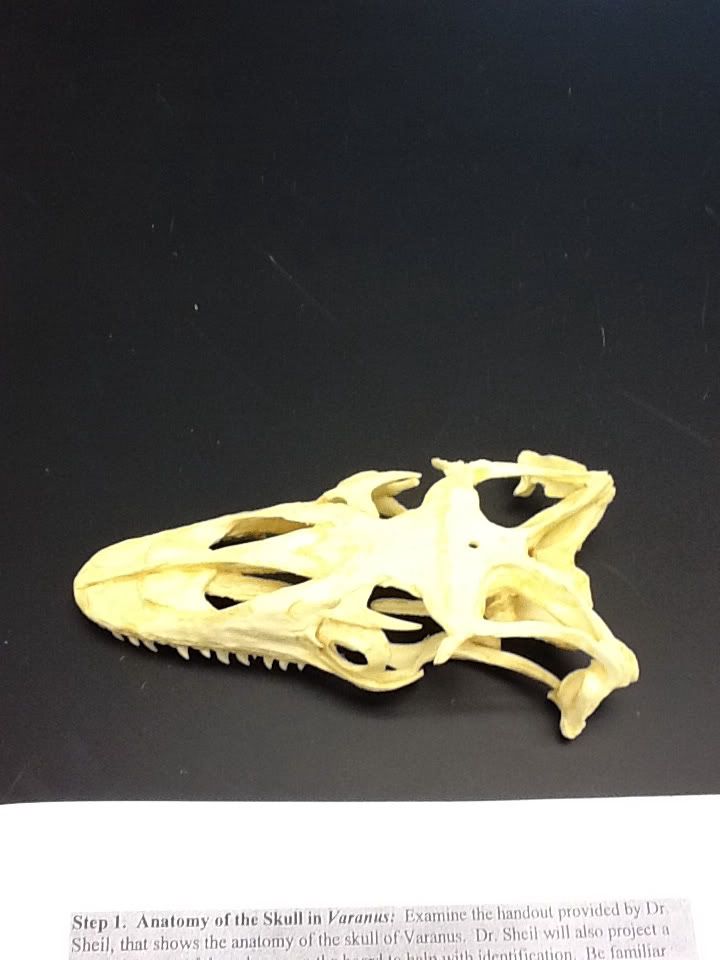
Varanus skull dorsal
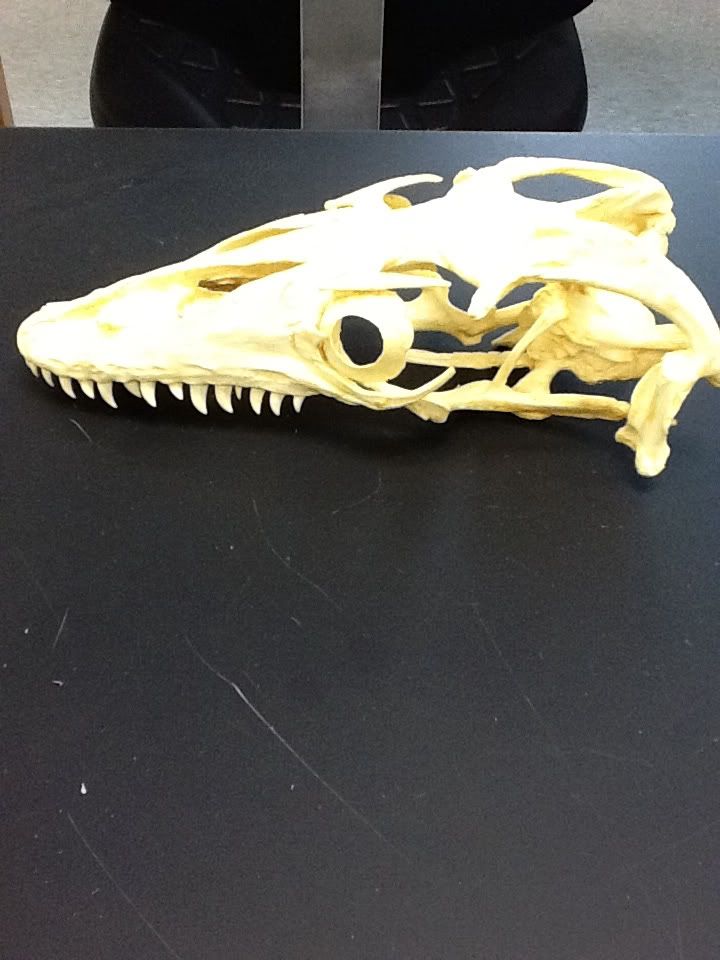
Varanus skull lateral
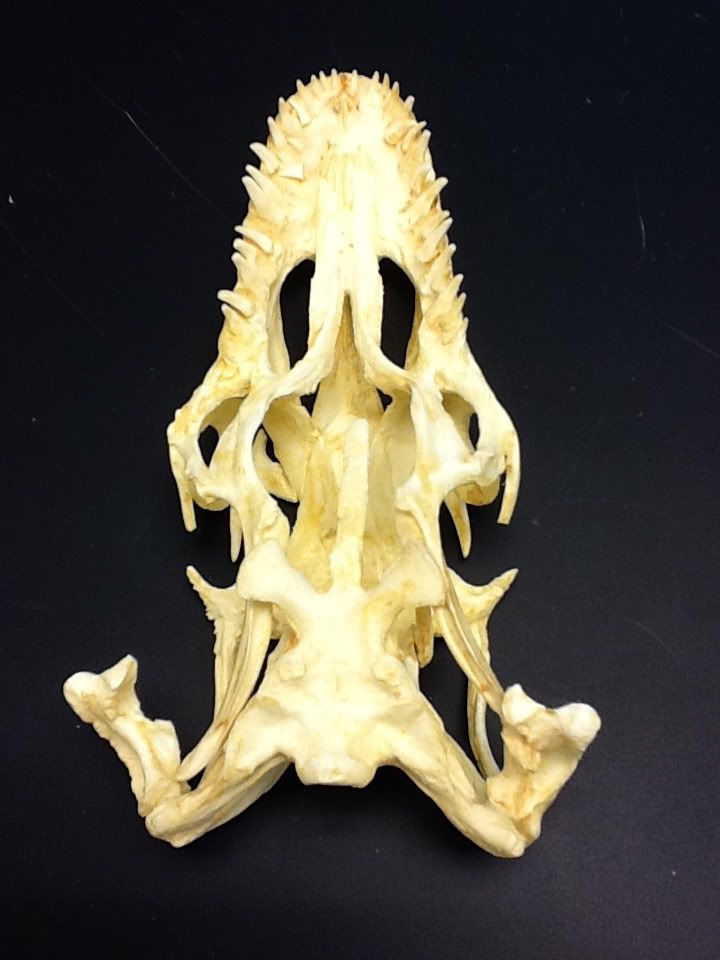
Varanus skull ventral

Here is a labeled Varanus skull (the picture is easier to view when opened in a new window).
Overall, our lab had representatives of nine families: Agamidae, Anguidae, Chamaeleonidae, Gekkonidae, Helodermatidae, Iguanidae, Scincidae, Teiidae, and Varanidae.
AGAMIDAE
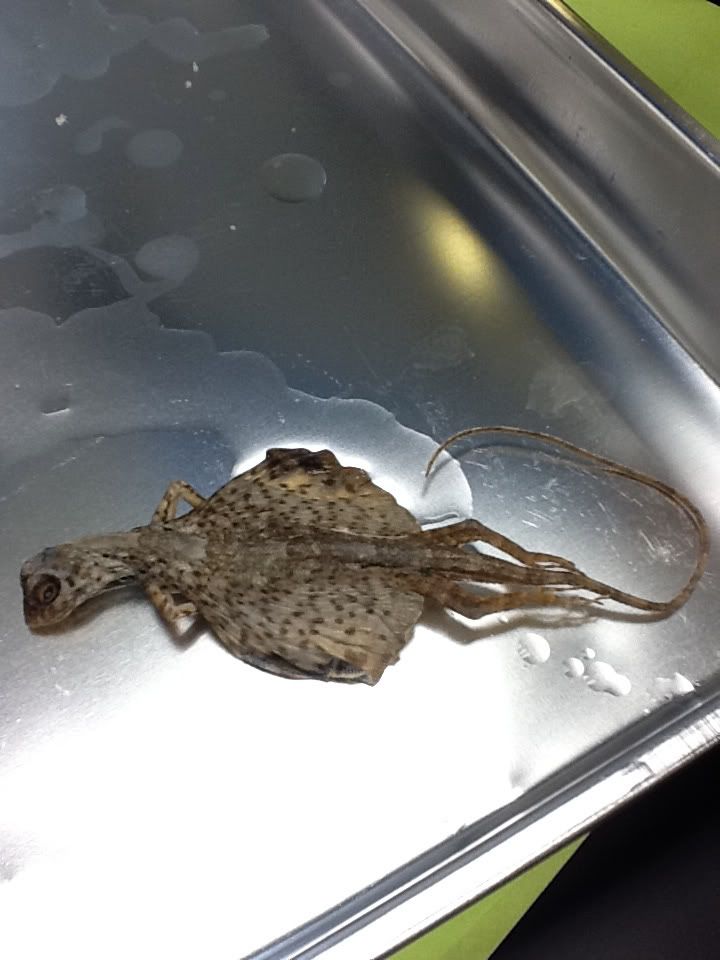
Draco. Notice the fan-like, airfoil ribs used for gliding.
Number of genera: 54
Distribution: Africa, Asia, Australia
Characteristics: Scales are overlapping (dorsally and ventrally), or scales are granular and juxtaposed. There are no limbless species of Agamidae. The pectoral girdle has a T-shaped interclavicle. All individuals have acrodont dentition without teeth on the pterygoid bone.
Biology: One subfamily (Agaminae) contains carnivorous, diurnal heliotherms while the other (Leiolepidinae) are terrestrial herbivores.
ANGUIDAE
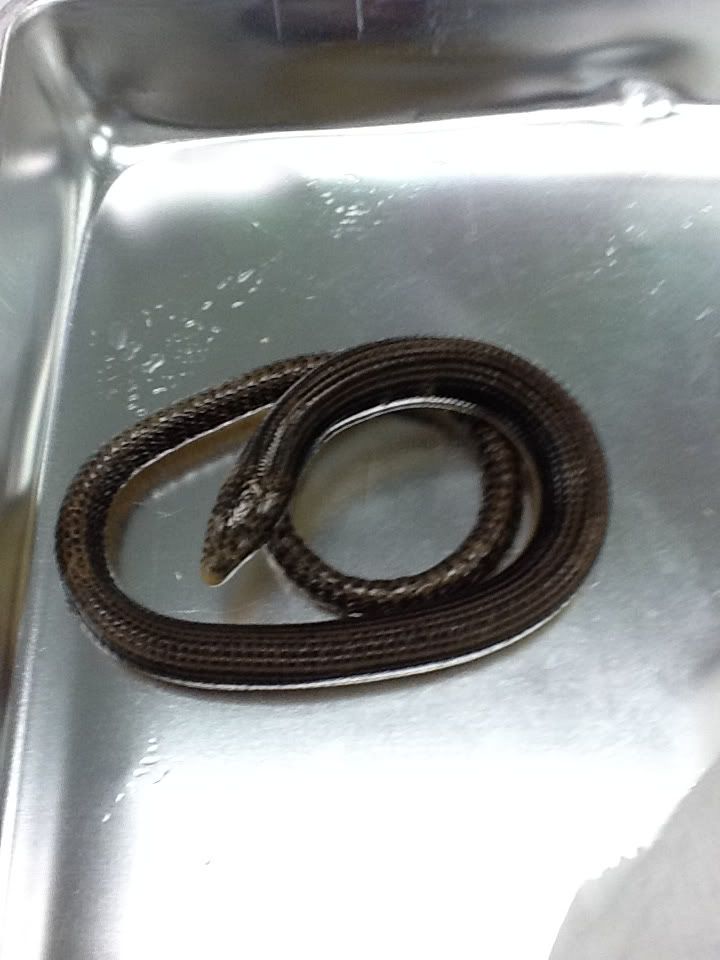
Pictured: Subfamily Anguinae - Ophisaurus
Number of genera: 13
Distribution: Americas, Europe, Southwest Asia, southern Asia
Characteristics: Heavily armored body with non-overlapping scales. All contain eyelids and a tympanum. These distinguishing such limbless lizards from snakes since no snakes have eyelids or tympani.
Biology: Some subfamilies exhibit a longitudinal groove between the dorsal and ventral sides, and undergo caudal autotomy* (cutting off the tail in an effort to distract predators). Some individuals have smooth, cervical, raised osteoderms on the trunk. Species of this family may have extreme limb reduction (as seen by the above example).
CHAMAELEONIDAE

Number of genera: 6
Distribution: Africa, Middle East, Madagascar, southern Spain, Sri Lanka, India
Characteristics: Very laterally compressed body with distal prehensile tails. All are zygodactylous with digits 1-2-3 together on the manus and 1-2 on the pes. All have projectile tongues and small, juxtaposed scales. Individuals have acrodont dentition.
Biology: Most species are largely arboreal and adjust their body colors to match their background. Chameleons have extraordinary control over their eye movement, in that each eye moves independent of the other. Individuals stalk their prey and focus both eyes on the target. Some species are oviparous while others are ovoviviparous.
GEKKONIDAE
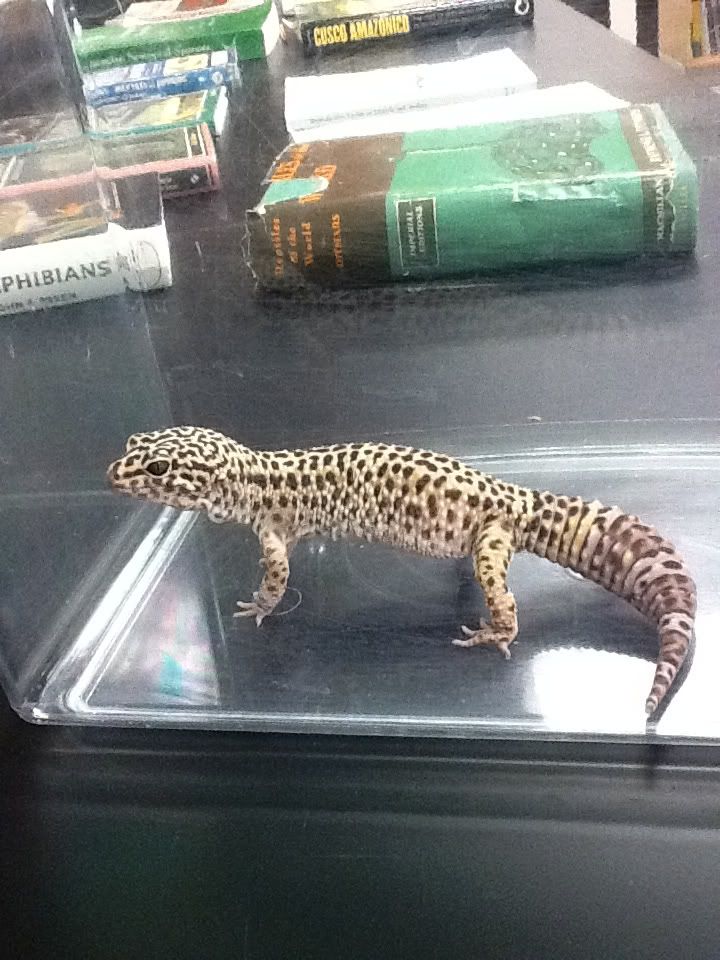
The leopard gecko (Eublepharis macularius), subfamily Eublepharinae
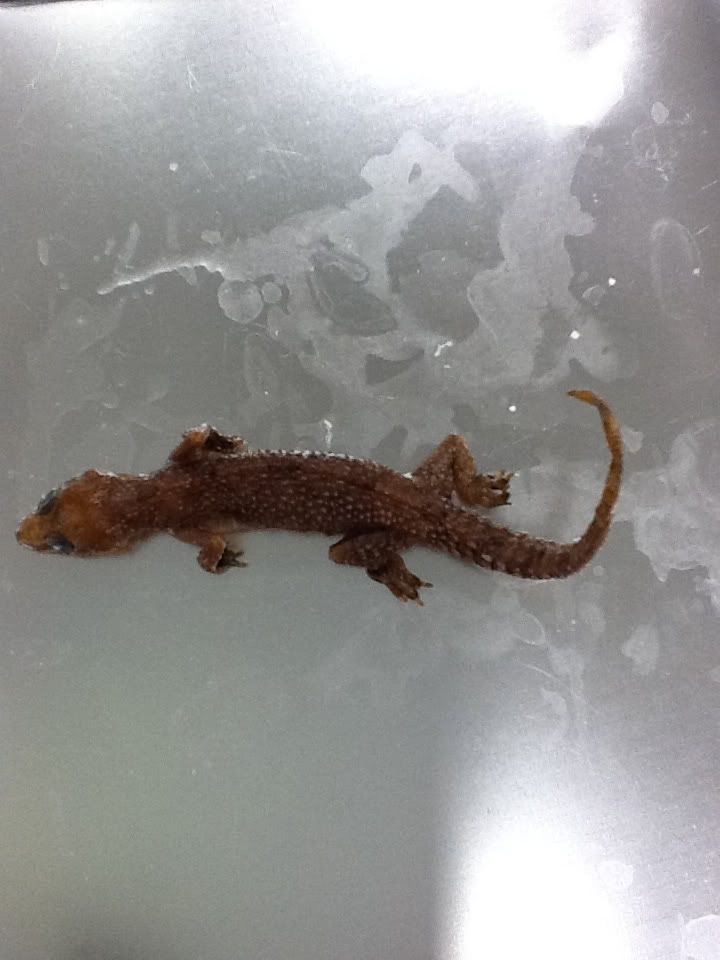
The common house gecko (Hemidactylus frenatus) - subfamily Gekkoninae
Number of genera: 92
Distribution: pantropic
Characteristics: Small granular scales with a large tail used for fat reserves. No species have papillae on the tongue, and none have lingual scales. Caudal autotomy* is common. All are pleurodont without teeth on the pterygoid, and most species have ventral scansors or lamellae on the manus and pes. Individuals can have 14 or 20+ sclerotic ossicles, altering lens shape.
Biology: This family is incredibly speciose with almost 1,000 recognized species, making the biology of the family highly variable. For instance, subfamilies occupy a wide range of habitats, from arid to moist and cool to hot. Species can be arboreal or strictly terrestrial, and diurnal or nocturnal. The most speciose subfamily, Gekkoninae, has over 800 known species and some are parthenogenic.
HELODERMATIDAE

Pictured: Mexican bearded lizard (Heloderma horridum)
Number of genera: 1
Distribution: Southwestern North America, Mexico, and as far south as Guatemala
Characteristics: Large lizards with the most developed venom glands. Individuals have large, circular, bead-like scales and ventral osteoderms, and dark coloration with pinkish to yellowish markings. Helodermatids have pleurodont dentition with pterygoid teeth.
Biology: Helodermatids are mostly found in burrows when they are not foraging or searching for mates. Their tails are used for storage and do not undergo caudal autotomy. They are carnivores that have the ability to swallow very large prey.
IGUANOIDEA
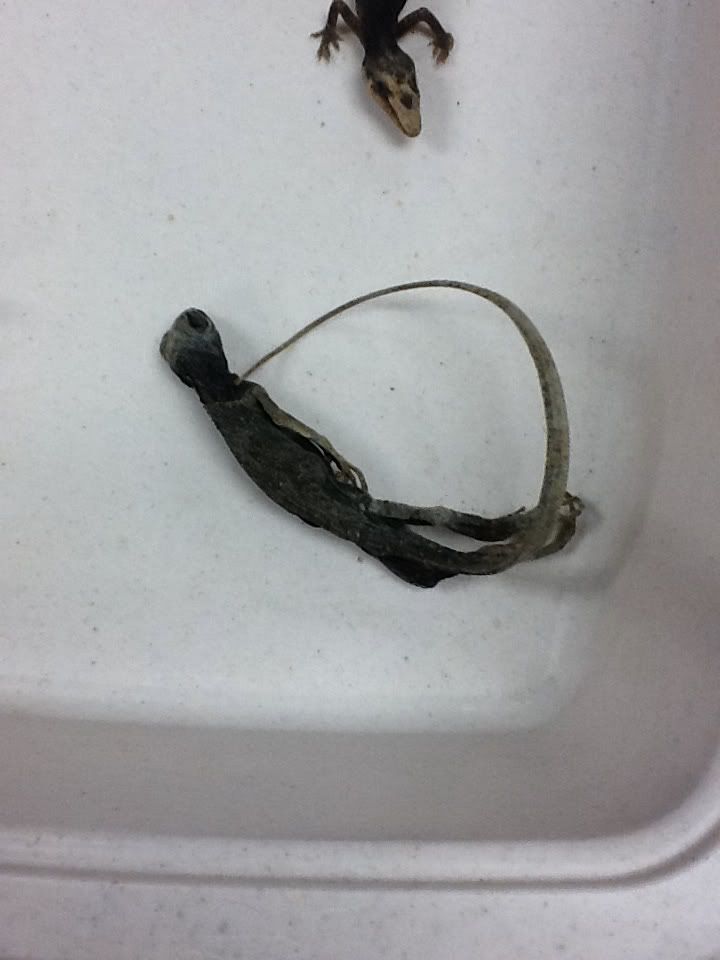
Family Corytophanidae - Basiliscus
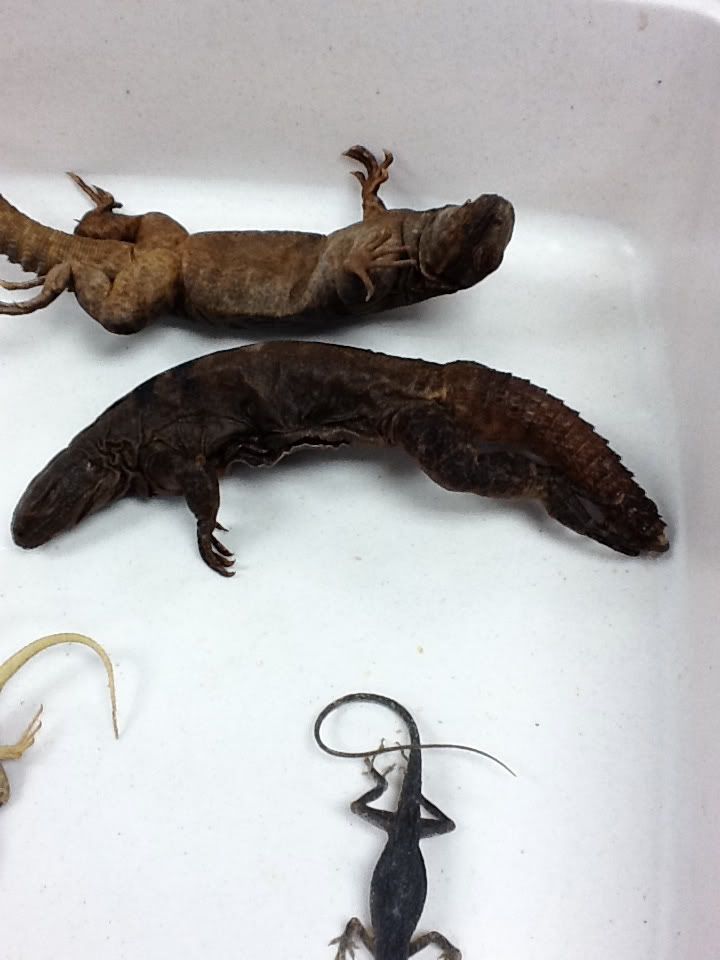
Top of picture with thick tail: Family Iguanidae, genus Ctenosaura
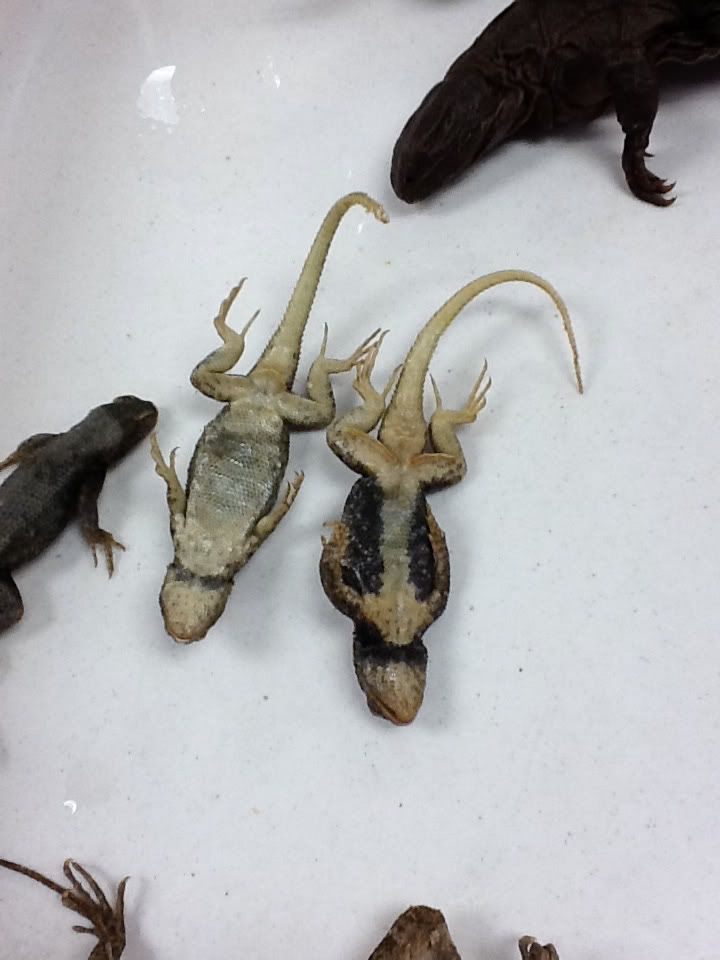
Two lizards in middle: Family Phrynosomatidae, Sceloporus undulatus
Number of genera: 47
Distribution: Americas to Madagascar and the Pacific Islands
Characteristics: The iguanids have long tails, no osteoderms, and range in sizes from small to large. The tail undergoes caudal autotomy* with fracture planes in the vertebrae. They have pleurodont dentition and a non-retractable tongue. The scales on the iguanids are large, overlapping, and keeled or small and granular.
Biology: This family has members that occupy a wide range of habitats, from terrestrial and marine to almost completely arboreal environments. While their diets vary as young, all iguanids are herbivores when they are adults.
SCINCIDAE
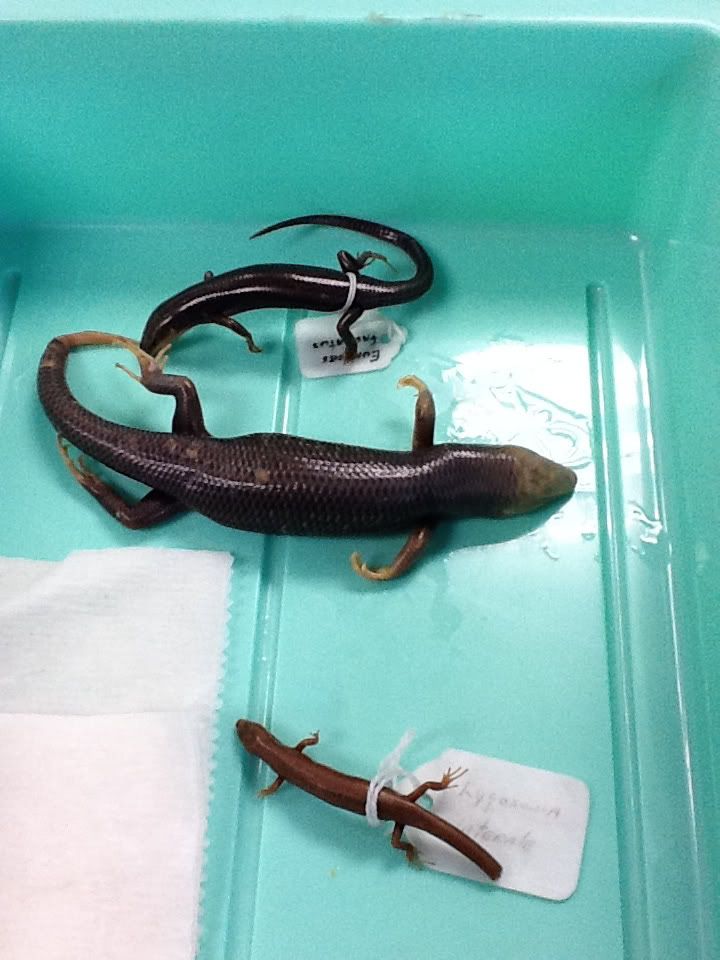
Pictured (top to bottom): Plestiodon fasciatus, Plestiodon laticeps, Scincella lateralis (NoteL What is now Plestiodon used to be Eumeces.)
Number of genera: 137
Distribution: Worldwide, except extreme heat and cold
Characteristics: Skinks are generally small, although there are some large members. They are completely lined with cycloid scales and have osteoderms underlining the scales. All skinks have pleurodont dentition. Caudal autotomy* is common but not done by every species, and some species are limbless.
Biology: Like geckos, this speciose family has a wide range of habitats (varying in moisture, temperature, elevation, etc.) and activity (diurnal or nocturnal). Approximately 45% of the members are ovoviviparous.
TEIIDAE
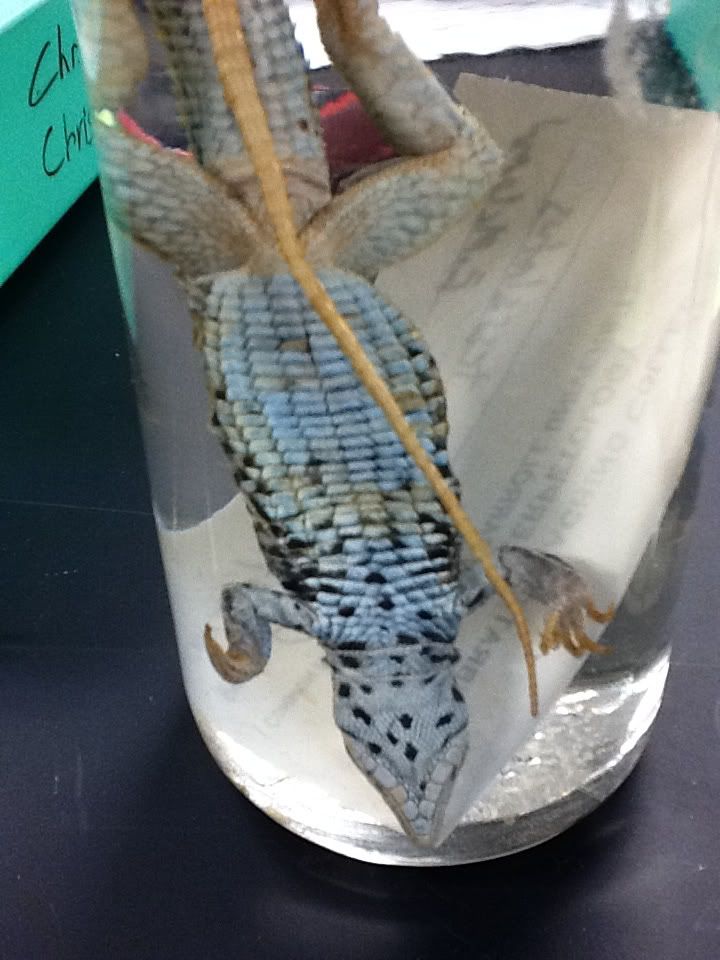
Subfamily Teiinae, genus Cnemidophorus
Number of genera: 10
Distribution: Throughout the Americas, from the Northern United States to Chile
Characteristics: Rectangular scales that form transverse rows while the dorsal scales are usually small and granular. There are no osteoderms on the body. The parietal foramen is often present and perforates the parietal. Caudal autotomy* is common in teiids, and all have pleurodont dentition.
Biology: Most species share similar body structure, with a long body, hindlimbs, and tail. All genera are likely oviparous. One subfamily feeds on arthropods while the other is omnivorous.
VARANIDAE
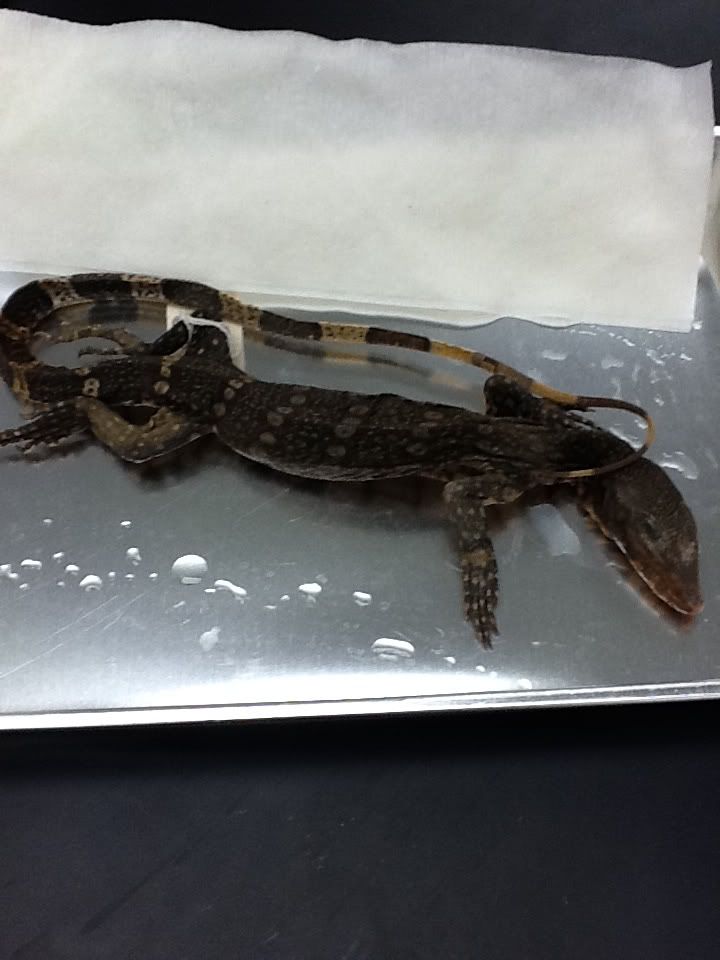
Pictured: Subfamily Varaninae, genus Varanus
Number of genera: 2
Distribution: Africa, Asia, and Australia
Characteristics: These lizards are large with small rounded scales and ventral osteoderms in some species. The tail is large and has no caudal autotomy. Varanids have pleurodont dentition and a parietal foramen. Although this family is easily confused with Teiidae, the main difference lies in the scales; varanids have round scales whereas teiids have ventral rectangular scales (see picture of Teiidae example above).
Biology: All varanids are found in warm temperate and tropical habitats, and are oviparous. The largest known lizard (Varanus komodensis - Komodo dragon) is a varanid, growing up to three meters long.
Ohio is home to two families and five species:
Sceloporus undulatus garmani (Iguanidae) - very long digits relative to size of manus and pes; femoral pores are prominent in females

Scincella lateralis (Scincidae) - brown dorsal stripe, "smooth" appearance

Eumeces fasciatus (Scincidae) - dark brown to black; has five yellow or white lines running laterally down the body

Eumeces laticeps (Scincidae) - large jaws that broaden the head; olive brown and have reddish-orange heads; Ohio is the farthest north they are naturally found; exhibit sexual dimorphism, with females being larger than males

Eumeces anthracinus anthracinus (Scincidae) - four lines that run down the body and tail; black patches run between the two yellow dorsal lines


Ohio spp.
* = As mentioned throughout this blog, caudal autotomy is the severing of the lizard's tail. The tail grows back, although the new tail is usually imperfect. Muscle contractions force the tail to break along fracture planes in the vertebrae, and then sphincter muscles contract to prevent too much bleeding. Below is an example of a regenerating tail after autotomy.

No comments:
Post a Comment